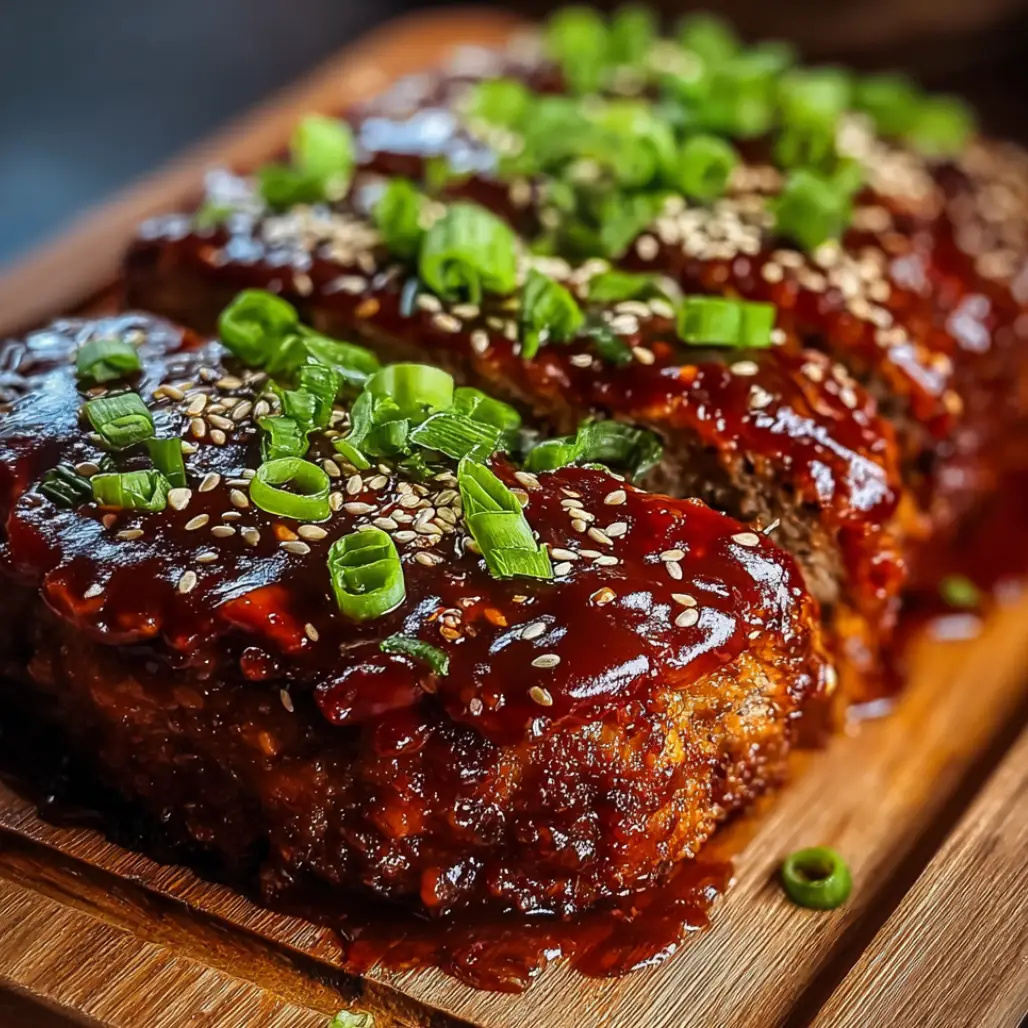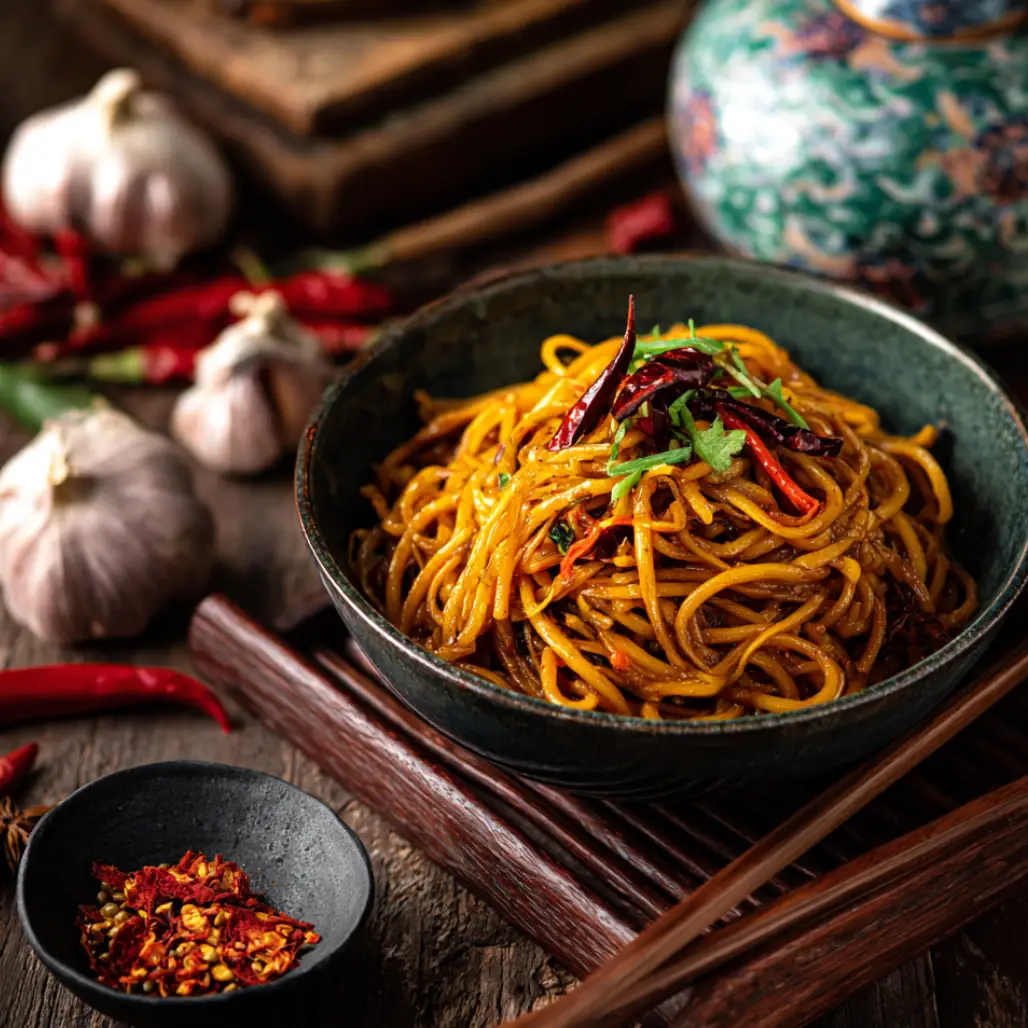| Prep Time | Cook Time | Total Time | Serves |
|---|---|---|---|
| 15 minutes | 25 minutes | 40 minutes | 4 |
Why This Creamy Pork Tenderloin Medallions with Orzo Recipe Works
The remarkable success of creamy pork tenderloin medallions with orzo stems from the thoughtful combination of cooking techniques and ingredient relationships that work harmoniously to create both exceptional flavor and appealing presentation because each component contributes unique characteristics while supporting the overall dish composition. Pork tenderloin provides the ideal protein foundation because its lean, tender texture cooks quickly and evenly while absorbing the flavors of the cream sauce without becoming dry or tough when prepared using proper medallion technique.
The orzo pasta serves multiple purposes in this creamy pork tenderloin medallions with orzo preparation because its rice-like shape allows it to absorb the rich cream sauce while providing substantial texture that complements the tender pork medallions. This particular pasta choice works exceptionally well because orzo cooks relatively quickly and maintains its shape during the simmering process, creating a cohesive dish where every element integrates seamlessly.
Fresh vegetables like spinach and mushrooms contribute essential flavor complexity because they provide earthy undertones and vibrant color that balance the richness of the cream sauce while adding nutritional value that makes this creamy pork tenderloin medallions with orzo both satisfying and wholesome. The timing of vegetable additions ensures proper texture because spinach wilts quickly while mushrooms develop deep, caramelized flavors when seared properly.
The cream sauce acts as the unifying element because it carries herbs and seasonings throughout the dish while creating the luxurious mouthfeel that makes this creamy pork tenderloin medallions with orzo so comforting and appealing. Proper sauce development requires understanding how cream behaves under heat because excessive temperature can cause separation while insufficient heat prevents proper thickening and flavor concentration.
This one-pan approach maximizes flavor development because the fond created from searing the pork provides the foundation for the sauce while streamlining preparation and cleanup, making this creamy pork tenderloin medallions with orzo practical for busy weeknight cooking despite its sophisticated results.
Essential Ingredients for Perfect Creamy Pork Tenderloin Medallions with Orzo
For the Pork:
- 2 pounds pork tenderloin (trimmed and silver skin removed)
- 2 tablespoons olive oil
- 1 teaspoon salt
- 1/2 teaspoon black pepper
- 1 teaspoon paprika
- 1/2 teaspoon Italian seasoning
For the Orzo and Vegetables:
- 1 1/2 cups orzo pasta
- 8 ounces baby bella mushrooms (sliced)
- 5 ounces fresh baby spinach
- 3 cloves garlic (minced)
- 1 medium onion (diced)
For the Cream Sauce:
- 1 cup heavy cream
- 1/2 cup chicken broth
- 1/2 cup white wine (optional)
- 2 tablespoons fresh thyme (or 1 tablespoon dried)
- 1/4 cup fresh parsley (chopped)
- 2 tablespoons butter
For Finishing:
- 1/2 cup grated Parmesan cheese
- Red pepper flakes (to taste)
- Fresh herbs (for garnish)
Creating exceptional creamy pork tenderloin medallions with orzo requires selecting premium ingredients because the simplicity of this one-pan meal means that each component must contribute optimal flavor and texture to achieve the sophisticated results that make this dish so memorable. High-quality pork tenderloin forms the protein foundation because its naturally tender texture and mild flavor provide the perfect canvas for the rich cream sauce while cooking quickly enough to maintain juiciness throughout the preparation process.
Fresh herbs make a significant difference because their aromatic oils and bright flavors create the complex taste profile that distinguishes homemade creamy pork tenderloin medallions with orzo from ordinary pasta dishes. Heavy cream provides the luxurious base because its fat content creates the smooth, velvety texture that coats both the pork and orzo while carrying flavors throughout every bite.
Quality orzo pasta ensures proper texture because authentic varieties hold their shape during cooking while absorbing sauce effectively, creating the ideal foundation that makes this creamy pork tenderloin medallions with orzo so satisfying and substantial.
The Art of Creating Perfect Creamy Pork Tenderloin Medallions with Orzo
Mastering the preparation of creamy pork tenderloin medallions with orzo involves understanding how protein cookery, pasta timing, and sauce development work together to create a cohesive, restaurant-quality meal because this knowledge allows you to orchestrate multiple cooking processes simultaneously while maintaining optimal texture and flavor in each component. The process begins with proper pork preparation because uniform medallion thickness ensures even cooking while appropriate seasoning enhances the meat’s natural flavors without overwhelming the delicate balance.
Temperature control throughout cooking determines success because pork tenderloin requires precise heat management to achieve the perfect balance between thorough cooking and moisture retention. Understanding visual and tactile cues helps you recognize when the pork reaches optimal doneness because overcooking results in dry, tough medallions that detract from the overall appeal of this creamy pork tenderloin medallions with orzo.
Timing coordination becomes crucial because orzo requires specific cooking duration while vegetables need varying amounts of heat exposure to achieve proper texture and flavor development. The strategic sequencing of cooking steps ensures that all components finish simultaneously because this synchronization prevents any element from becoming overcooked or sitting too long before service.
Sauce technique requires understanding how dairy products behave under heat because cream can separate if heated too aggressively while insufficient heat prevents proper thickening and flavor concentration. The proper incorporation of aromatics and seasonings creates the complex flavor profile that makes this creamy pork tenderloin medallions with orzo so appealing and memorable.
Finishing touches transform good cooking into exceptional dining because proper garnishing, appropriate seasoning adjustments, and thoughtful presentation elevate the entire experience while demonstrating attention to detail that guests notice and appreciate.
Step-by-Step Instructions for Creamy Pork Tenderloin Medallions with Orzo
Preparing the Pork Medallions
Begin by trimming any excess fat and silver skin from the pork tenderloin because these tough connective tissues can create unpleasant texture while preventing proper seasoning penetration that enhances the overall flavor of your creamy pork tenderloin medallions with orzo. Slice the trimmed tenderloin into medallions approximately 1-inch thick because uniform thickness ensures even cooking while providing substantial portions that maintain moisture during the searing process.
Season the medallions generously on both sides with salt, pepper, paprika, and Italian seasoning because proper seasoning creates the flavorful foundation that complements the cream sauce while enhancing the pork’s natural taste. Allow the seasoned medallions to rest at room temperature for 10-15 minutes because this tempering process promotes even cooking while allowing the seasonings to penetrate the meat effectively.
Professional Tip: Pat the pork medallions completely dry with paper towels before seasoning because surface moisture prevents proper browning and can cause oil spattering during the searing process.
Key Points: Uniform medallion thickness and proper seasoning create the foundation for successful creamy pork tenderloin medallions with orzo because these preparation steps directly impact both flavor development and cooking consistency.
Searing the Pork to Perfection
Heat a large, heavy-bottomed skillet or Dutch oven over medium-high heat because proper temperature creates the ideal searing environment that develops the rich, caramelized flavors that form the base of your creamy pork tenderloin medallions with orzo sauce. Add olive oil to the hot pan and allow it to shimmer because this visual cue indicates optimal temperature for searing while preventing the pork from sticking to the pan surface.
Place the seasoned medallions in the hot oil, ensuring adequate space between pieces because overcrowding reduces pan temperature and prevents proper browning that creates the fond essential for sauce development. Sear the medallions for 3-4 minutes per side without moving them because this patience allows proper caramelization while developing the golden-brown color that indicates optimal flavor development.
Professional Tip: Resist the urge to press down on the medallions with a spatula because this pressure expresses valuable juices while preventing the natural browning process that creates superior flavor and texture.
Key Points: Proper searing technique creates the flavorful foundation for the cream sauce because the caramelized bits left in the pan provide the complex base notes that make this creamy pork tenderloin medallions with orzo so delicious.
Building the Aromatic Base
Remove the seared medallions to a plate and tent with foil because this resting period allows carryover cooking while keeping the meat warm during sauce preparation for your creamy pork tenderloin medallions with orzo. Reduce heat to medium and add diced onions to the same pan because the residual fat and fond create an ideal environment for developing sweet, caramelized flavors that enhance the overall dish complexity.
Cook the onions for 3-4 minutes until softened and translucent because this timing allows proper flavor development while preventing burning that could create bitter notes in your finished creamy pork tenderloin medallions with orzo. Add sliced mushrooms to the pan because their earthy flavors complement the pork while their moisture helps deglaze the caramelized bits from the pan bottom.
Professional Tip: Don’t overcrowd the mushrooms because excess moisture prevents proper browning and can create a steamed rather than caramelized flavor that diminishes the overall impact of your creamy pork tenderloin medallions with orzo.
Key Points: Proper vegetable cookery creates the aromatic foundation because well-developed onion and mushroom flavors provide the complexity that distinguishes exceptional dishes from ordinary preparations.
Creating the Cream Sauce
Add minced garlic and fresh thyme to the sautéed vegetables because these aromatics provide the herbal notes that make this creamy pork tenderloin medallions with orzo so fragrant and appealing. Cook for 30-60 seconds until fragrant because this brief exposure allows the aromatics to release their essential oils without burning or becoming bitter.
Pour in chicken broth and white wine, if using, to deglaze the pan because this liquid dissolves the caramelized fond while creating the flavorful base for your cream sauce. Bring the mixture to a simmer and cook for 2-3 minutes because this reduction concentrates flavors while cooking off the alcohol if wine is used.
Professional Tip: Scrape the bottom of the pan thoroughly with a wooden spoon during deglazing because those caramelized bits contain concentrated flavors that are essential for creating the complex taste profile of your creamy pork tenderloin medallions with orzo.
Key Points: Proper deglazing technique captures all the flavorful fond because these caramelized bits provide the depth and complexity that make homemade cream sauces superior to store-bought alternatives.
Incorporating Orzo and Finishing Elements
Add the orzo pasta directly to the simmering broth mixture because cooking the pasta in the flavored liquid allows it to absorb the aromatic base while creating a more integrated final dish. Stir frequently and add additional broth or water as needed because orzo requires adequate liquid to cook properly while preventing sticking that could compromise the texture of your creamy pork tenderloin medallions with orzo.
Pour in the heavy cream and bring to a gentle simmer because this temperature allows proper thickening while preventing separation that could ruin the sauce consistency. Add the fresh spinach and allow it to wilt because this timing preserves the vibrant color while providing nutritional value and fresh flavor contrast.
Professional Tip: Taste the orzo for doneness because properly cooked pasta should be al dente with slight resistance to the bite, creating the ideal texture that complements the tender pork in this creamy pork tenderloin medallions with orzo.
Key Points: Proper cream sauce temperature prevents separation because excessive heat can cause the dairy to break while insufficient heat prevents proper thickening and flavor concentration.
Final Assembly and Serving
Return the seared pork medallions to the pan, nestling them into the creamy orzo mixture because this final cooking step allows the flavors to meld while ensuring the pork reaches proper internal temperature. Simmer gently for 3-4 minutes until the pork reaches 145°F internal temperature because this final heating ensures food safety while maintaining the juicy texture that makes this creamy pork tenderloin medallions with orzo so appealing.
Stir in grated Parmesan cheese and fresh parsley because these finishing touches add richness and bright color that enhance both flavor and visual appeal. Adjust seasoning with salt, pepper, and red pepper flakes to taste because proper final seasoning balances all elements while allowing personal preference to guide the finished dish character.
Professional Tip: Remove the pan from heat before adding the Parmesan cheese because residual heat melts the cheese smoothly while preventing clumping that could affect the texture of your creamy pork tenderloin medallions with orzo.
Key Points: Final temperature monitoring ensures food safety because pork should reach 145°F internal temperature while proper resting allows carryover cooking to complete the process without overcooking.
Professional Tips for Perfect Creamy Pork Tenderloin Medallions with Orzo
Temperature management throughout the cooking process determines the success of your creamy pork tenderloin medallions with orzo because pork tenderloin requires precise heat control to achieve optimal texture while cream sauces demand careful temperature regulation to prevent separation. Use a reliable instant-read thermometer to monitor pork doneness because visual cues can be misleading while proper internal temperature ensures both safety and optimal texture.
Ingredient quality significantly impacts final results because premium pork tenderloin provides superior flavor and texture while high-quality cream creates the luxurious sauce consistency that makes this creamy pork tenderloin medallions with orzo so appealing. Source your pork from reputable suppliers because properly raised animals produce more flavorful meat with better texture characteristics.
Timing coordination prevents overcooking because each component requires specific attention while the one-pan method demands careful orchestration to ensure everything finishes simultaneously. Prepare all ingredients before beginning because this mise en place approach prevents delays that could result in overcooked elements or uneven doneness.
Pan selection affects heat distribution because heavy-bottomed cookware provides even heating while adequate size prevents overcrowding that compromises browning and cooking efficiency. A 12-inch skillet or Dutch oven provides optimal space for this creamy pork tenderloin medallions with orzo recipe while allowing proper heat circulation.
Sauce consistency can be adjusted because cream sauces naturally thicken as they cool while additional liquid can thin overly thick preparations. Keep warm chicken broth available because this allows consistency adjustment without diluting flavor concentration in your finished creamy pork tenderloin medallions with orzo.
Creative Variations of Creamy Pork Tenderloin Medallions with Orzo
Transform your basic creamy pork tenderloin medallions with orzo into exciting new variations by incorporating seasonal vegetables, different herbs, or alternative flavor profiles because these adaptations allow you to customize the recipe for various occasions and preferences while maintaining the essential cooking techniques that make this dish so successful. Mediterranean-style creamy pork tenderloin medallions with orzo incorporates sun-dried tomatoes, olives, and fresh basil because these ingredients provide bright, tangy flavors that complement the rich cream sauce while adding colorful visual appeal.
Mushroom lover’s creamy pork tenderloin medallions with orzo features a variety of mushrooms like shiitake, cremini, and oyster varieties because different mushroom types provide varying textures and flavor profiles that create more complex taste experiences. The earthiness of mixed mushrooms enhances the pork’s natural flavors because their umami characteristics provide depth without overwhelming the delicate balance.
Autumn-inspired creamy pork tenderloin medallions with orzo includes roasted butternut squash and sage because these seasonal ingredients provide sweet, nutty flavors that complement pork beautifully while creating warming comfort food perfect for cooler weather. The natural sweetness of squash balances the savory elements because its mild flavor harmonizes with cream sauce while providing attractive orange color contrast.
Lighter version creamy pork tenderloin medallions with orzo substitutes half-and-half for heavy cream and adds extra vegetables because this modification reduces calories while maintaining satisfying flavor and texture. Additional zucchini, bell peppers, or broccoli provide nutrition and bulk because these vegetables absorb sauce flavors while contributing vibrant colors and varied textures.
Wine-enhanced creamy pork tenderloin medallions with orzo features a more pronounced wine flavor because increasing the wine quantity while reducing other liquids creates more complex flavor development. Different wine varieties provide varying characteristics because dry white wines offer crisp acidity while red wines contribute deeper, more robust flavors that pair beautifully with pork.
Spicy variation creamy pork tenderloin medallions with orzo incorporates red pepper flakes, jalapeños, or hot paprika because these heat elements add excitement while balancing the rich cream sauce with stimulating contrasts that keep the palate engaged throughout the meal.
Perfect Pairing Ideas for Creamy Pork Tenderloin Medallions with Orzo
The rich, satisfying character of creamy pork tenderloin medallions with orzo makes it an ideal centerpiece for memorable dining experiences because its substantial nature and complex flavors pair beautifully with both casual and elegant accompaniments while its one-dish convenience allows focus on complementary sides and beverages. Wine selections should balance the cream sauce richness because white wines with good acidity cut through dairy elements while light reds complement the pork without overwhelming the delicate orzo and vegetable components.
Chardonnay provides excellent pairing because its buttery characteristics harmonize with the cream sauce while its moderate acidity prevents palate fatigue during extended dining. Pinot Grigio offers crisp contrast because its clean, mineral character cleanses the palate between bites while enhancing the herb flavors in this creamy pork tenderloin medallions with orzo without competing with the complex sauce elements.
For red wine enthusiasts, Pinot Noir works beautifully because its light body and fruit-forward character complement pork while its moderate tannins don’t overpower the creamy sauce. Côtes du Rhône represents another excellent choice because its blend of grapes provides complexity that enhances the dish while its medium body stands up to the rich flavors without overwhelming the delicate balance.
Simple vegetable sides create refreshing contrast because crisp, acidic elements provide palate-cleansing effects that allow guests to enjoy multiple servings without feeling overwhelmed by richness. Consider pairing with selections from the fresh salad collection at Tasty Middles because these lighter options complement rather than compete with the substantial main dish.
Crusty artisan bread serves dual purposes because it provides a vehicle for enjoying any extra sauce while adding textural contrast that enhances the overall dining experience. Garlic bread or herb-crusted varieties work particularly well because their aromatic qualities complement the herb flavors in this creamy pork tenderloin medallions with orzo while providing satisfying substance.
For those interested in creating complete dinner experiences, consider exploring the perfect sides collection at Tasty Middles because these recipes offer complementary flavors and textures that would create memorable family dinners or elegant entertaining occasions.
Discover More Exceptional One-Pan Meals and Comfort Food Ideas
Expanding your one-pan meal repertoire beyond creamy pork tenderloin medallions with orzo opens up exciting possibilities for creating satisfying dinners that minimize cleanup while maximizing flavor because understanding the principles that make this recipe successful allows you to apply similar techniques to other proteins and ingredients while developing your skills as an efficient home cook. The art of one-pan cooking involves understanding how different ingredients behave when cooked together because timing, temperature, and liquid management all affect final results.
Seasonal menu planning keeps your dinner rotation interesting because different times of year offer unique ingredients and flavor profiles that can transform basic one-pan techniques into exciting new creations. Spring might emphasize fresh asparagus and peas because these vegetables provide bright, clean flavors that celebrate renewal, while summer could focus on tomatoes and zucchini because their peak flavors create naturally sweet, satisfying dishes.
The principles of protein cookery extend beyond pork tenderloin because understanding how to properly sear, season, and finish different meats allows you to adapt this creamy pork tenderloin medallions with orzo technique to chicken, beef, or seafood while maintaining the essential characteristics that make one-pan meals so appealing. Different proteins require varying cooking times and temperatures because this knowledge enables confident recipe adaptation.
For those interested in exploring sophisticated flavor combinations and advanced one-pan techniques, the comprehensive collection at Solush Recipes demonstrates how traditional side dishes can be integrated into complete one-pan meals that showcase creativity while maintaining practical preparation methods.
Understanding sauce development creates more versatile cooking skills because cream sauces, pan gravies, and reduction techniques apply to countless different recipes while providing the unifying elements that transform simple ingredients into sophisticated dining experiences. The lessons learned from perfecting this creamy pork tenderloin medallions with orzo apply to many other preparations because fundamental cooking principles translate across different ingredient combinations.
Comfort food evolution reflects changing tastes and dietary preferences because traditional techniques can be adapted to accommodate modern nutritional understanding while maintaining the satisfying characteristics that make these dishes so appealing. Lighter versions, vegetarian adaptations, and ingredient substitutions provide options for different dietary needs because flexible cooking approaches ensure everyone can enjoy satisfying meals.
Proper Storage Guidelines for Creamy Pork Tenderloin Medallions with Orzo
Understanding proper storage techniques for creamy pork tenderloin medallions with orzo ensures that you can safely preserve leftovers while maintaining optimal flavor and texture because dairy-based dishes require specific handling to prevent spoilage and preserve the creamy consistency that makes this dish so appealing. Cooked pork and cream sauce combinations remain safe for consumption when properly refrigerated because following food safety guidelines prevents bacterial growth while proper storage techniques preserve quality characteristics.
Refrigerated storage works for up to three days because this timeframe allows safe consumption while maintaining acceptable flavor and texture quality. Cool the dish completely before refrigerating because rapid cooling prevents bacterial growth while proper container selection prevents moisture loss and odor absorption that could affect taste and consistency.
Portioning before storage offers practical advantages because individual servings reheat more evenly while allowing selective use of leftovers without exposing the entire quantity to temperature fluctuations. Use shallow containers because they promote faster cooling while ensuring even temperature distribution that maintains food safety standards throughout the storage period.
Freezing isn’t recommended for this creamy pork tenderloin medallions with orzo because dairy-based sauces can separate and develop grainy textures when frozen and thawed, resulting in disappointing quality that doesn’t justify the storage convenience. However, you can freeze the components separately because cooked pork medallions freeze well while fresh sauce can be prepared quickly when needed.
Reheating requires gentle heat because aggressive temperature can cause sauce separation while ensuring proper internal temperature maintains food safety. Add small amounts of cream, broth, or milk during reheating because these liquids restore proper consistency while preventing the sauce from becoming too thick or separating during the warming process.
Leftover enhancement techniques can improve reheated dishes because adding fresh herbs, additional seasoning, or a splash of wine can revitalize flavors that may have mellowed during storage, making your reheated creamy pork tenderloin medallions with orzo taste fresh and appealing.
The Science Behind Creamy Pork Tenderloin Medallions with Orzo’s Success
The remarkable appeal of creamy pork tenderloin medallions with orzo stems from complex chemical and physical reactions that occur during cooking because scientific understanding of these processes helps explain why this particular combination of techniques and ingredients creates such satisfying results. Protein denaturation in pork occurs at specific temperatures because heat causes muscle fibers to contract and moisture to be expelled, making proper temperature control essential for maintaining the tender, juicy texture that makes this dish so appealing.
The Maillard reaction during searing creates hundreds of new flavor compounds because the interaction between proteins and sugars at high temperatures produces the complex, savory notes that form the foundation of the cream sauce. These browning reactions contribute significantly to overall flavor development because the caramelized bits left in the pan provide concentrated taste elements that enhance the finished creamy pork tenderloin medallions with orzo.
Starch gelatinization in orzo affects both texture and sauce consistency because the pasta releases starches that help thicken the cream sauce while creating the unified dish character that makes this preparation so satisfying. Understanding this process allows proper timing because overcooked pasta releases excessive starch while undercooked orzo doesn’t contribute sufficient thickening elements.
Emulsification in cream sauces involves the combination of fat and water-based liquids because proper technique creates stable mixtures that maintain smooth consistency throughout service. Temperature control prevents separation because excessive heat can break the emulsion while insufficient heat prevents proper thickening and flavor development.
Fat carries flavor compounds because lipids dissolve aromatic molecules and carry them throughout the dish while coating the palate to extend flavor perception. This mechanism explains why cream-based dishes provide such satisfying and memorable eating experiences because the fat content enhances both taste intensity and duration.
Aromatic compound volatility affects flavor perception because different temperatures and cooking methods influence how these molecules reach olfactory receptors, impacting overall taste experience in this creamy pork tenderloin medallions with orzo preparation.
Troubleshooting Common Creamy Pork Tenderloin Medallions with Orzo Issues
Creating perfect creamy pork tenderloin medallions with orzo requires understanding common problems and their solutions because even experienced cooks encounter challenges that can affect both flavor and texture of this otherwise straightforward one-pan meal. Dry, tough pork typically results from overcooking or excessive heat because pork tenderloin cooks quickly and can become unpalatable when exposed to too much heat for too long a period.
If your pork turns out dry, reduce cooking time in future preparations because pork medallions should reach 145°F internal temperature without exceeding this target. Monitor doneness with an instant-read thermometer because visual cues can be misleading while proper temperature measurement ensures optimal texture in your creamy pork tenderloin medallions with orzo.
Separated or grainy cream sauce usually indicates excessive heat or rapid temperature changes because dairy products are sensitive to thermal stress while improper incorporation can cause proteins to coagulate. Maintain gentle heat during sauce preparation because simmering rather than boiling prevents separation while creating smooth, creamy consistency that enhances the dish appeal.
Mushy orzo results from overcooking or using insufficient liquid ratios because pasta continues cooking in the hot sauce while absorbing moisture that can make it unpalatably soft. Cook orzo until just al dente because it will continue cooking in the cream sauce while maintaining the firm texture that provides pleasant contrast to the tender pork.
Bland flavor typically indicates insufficient seasoning or inadequate browning because proper seasoning enhances all ingredients while thorough searing creates the flavorful foundation that makes this creamy pork tenderloin medallions with orzo so appealing. Season generously and taste frequently because building layers of flavor throughout the cooking process creates more complex and satisfying results.
Thin sauce consistency can be corrected by simmering longer because reduction concentrates flavors while evaporation thickens the mixture to proper coating consistency. Alternatively, mix cornstarch with cold broth because this slurry can thicken sauce quickly without affecting flavor balance in your finished creamy pork tenderloin medallions with orzo.
Uneven cooking often stems from crowded pans or inconsistent medallion thickness because proper spacing allows even heat circulation while uniform sizing ensures synchronized cooking throughout all pieces of pork in your dish.
Additional Inspirations for Exceptional Comfort Food Cooking
The principles that make creamy pork tenderloin medallions with orzo so successful can inspire broader exploration of comfort food cooking because understanding how to balance richness, develop complex flavors, and create satisfying textures opens up countless possibilities for creating memorable family meals that combine convenience with sophistication. Traditional comfort food concepts provide excellent frameworks for experimentation because established techniques can be modernized and adapted while maintaining the essential characteristics that make these dishes so appealing.
Seasonal adaptation keeps your comfort food repertoire fresh and relevant because different times of year offer unique opportunities to showcase peak ingredients while creating themed meals that reflect natural cycles and cultural celebrations. Autumn might emphasize root vegetables and warming spices because these ingredients provide the hearty, satisfying characteristics that complement cooler weather while spring could focus on fresh herbs and lighter preparations that celebrate renewal and growth.
The art of one-pan cooking extends beyond this creamy pork tenderloin medallions with orzo because understanding how different ingredients behave when cooked together allows you to create efficient, flavorful meals that minimize cleanup while maximizing taste development. Different proteins, vegetables, and starches can be combined using similar techniques because the fundamental principles of timing, temperature, and flavor building translate across many ingredient combinations.
For those interested in exploring sophisticated comfort food concepts and advanced preparation techniques, the expertly crafted collection at Solush Recipes demonstrates how traditional comfort foods can be elevated through creative seasoning and presentation while maintaining the satisfying characteristics that make them family favorites.
International comfort food traditions offer inspiration for creative adaptations because different cultures have developed sophisticated approaches to combining proteins, starches, and vegetables in satisfying one-dish preparations. Italian risottos, French cassoulets, and Asian clay pot dishes all provide starting points for developing signature comfort foods because these established traditions demonstrate successful flavor principles that translate well to modern cooking.
Understanding ingredient substitutions creates more flexible cooking approaches because dietary restrictions, seasonal availability, and personal preferences can guide modifications without compromising the essential appeal that makes comfort food so satisfying. The skills learned from mastering this creamy pork tenderloin medallions with orzo provide the foundation for confident recipe adaptation because understanding fundamental techniques enables creative problem-solving.
For those looking to expand their comfort food repertoire with complementary beverage options, the refreshing collection at Solush Recipes offers numerous ideas for creating satisfying drink pairings that enhance rather than compete with rich, creamy dishes like this creamy pork tenderloin medallions with orzo.
Conclusion
This comprehensive exploration of creamy pork tenderloin medallions with orzo demonstrates how thoughtful technique and quality ingredients can transform simple components into restaurant-worthy meals that satisfy both comfort food cravings and sophisticated dining expectations because the combination of properly seared pork, perfectly cooked pasta, and expertly developed cream sauce creates memorable experiences that rival professional kitchen offerings. The beauty of this creamy pork tenderloin medallions with orzo lies not only in its exceptional flavor and appealing presentation but also in its practical approach because the one-pan method maximizes efficiency while minimizing cleanup, making it accessible to busy home cooks who want to create impressive meals without extensive preparation time.
Understanding the science behind protein cookery, sauce development, and timing coordination empowers confident cooking because knowledge of how different elements interact allows you to troubleshoot problems and adapt recipes while achieving consistently excellent results. The techniques demonstrated in this creamy pork tenderloin medallions with orzo apply to numerous other one-pan meals because mastering temperature control, proper seasoning, and sauce technique provides the foundation for creating diverse, satisfying dinners across many different ingredient combinations.
Regular practice with this creamy pork tenderloin medallions with orzo will develop your culinary instincts and technical skills because repeated preparation builds confidence while teaching you to recognize proper doneness, optimal timing, and ideal flavor balance that distinguish exceptional home cooking from ordinary meal preparation. The investment in quality ingredients and proper technique pays dividends in family satisfaction because premium components and careful attention to detail create memorable dining experiences that bring people together around the table while demonstrating care and hospitality.
Whether you’re seeking an impressive centerpiece for dinner parties, a satisfying weeknight meal that comes together quickly, or a comforting dish that showcases the versatility of one-pan cooking, this creamy pork tenderloin medallions with orzo provides the perfect combination of accessibility and sophistication because it transforms ordinary ingredients into extraordinary experiences that demonstrate the transformative power of proper technique and thoughtful preparation. The skills and knowledge gained from mastering this recipe will serve as stepping stones to more advanced cooking because understanding fundamental principles of flavor development, texture management, and presentation creates the foundation for lifelong culinary exploration and enjoyment of exceptional meals that nourish both body and soul while creating lasting memories around shared dining experiences.










